Abstract
Previous studies on dynamic systems of transmission of malaria, and of eradication of infection following the interruption of transmission, have now been adapted for advanced techniques using the facilities offered by computers.
The computer programmes have been designed for a deterministic model suitable for a large community and also for a stochastic model relevant to small populations in which infections reach very low finite numbers. In this model, new infections and recoveries are assessed by the daily inoculation rate and are subject to laws of chance. Such a representation is closer than previous models to natural happenings in the process of malaria eradication. Further refinements of the new approach include the seasonal transmission and simulation of mass chemotherapy aimed at a cure of P. falciparum infections.
These programmes present models on which the actual or expected results of changes due to various factors can be studied by the analysis of specific malaria situations recorded in the field. The value of control methods can also be tested by the study of such hypothetical epidemiological models and by trying out various procedures.
Two specific malaria situations (in a pilot project in Northern Nigeria and in an outbreak in Syria) were studied by this method and provided some interesting results of operational value. The attack measures in the pilot project in Northern Nigeria were carried out according to the theoretical model derived from the basic data obtained in the field.
Full text
PDF
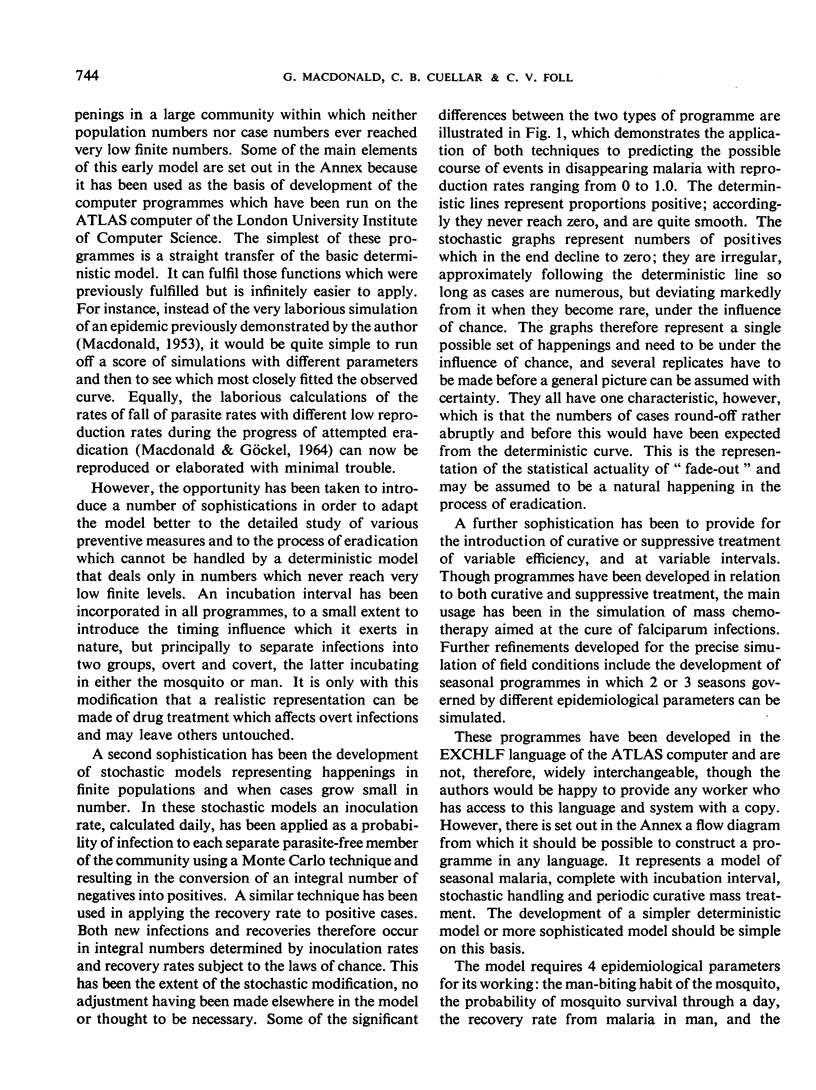
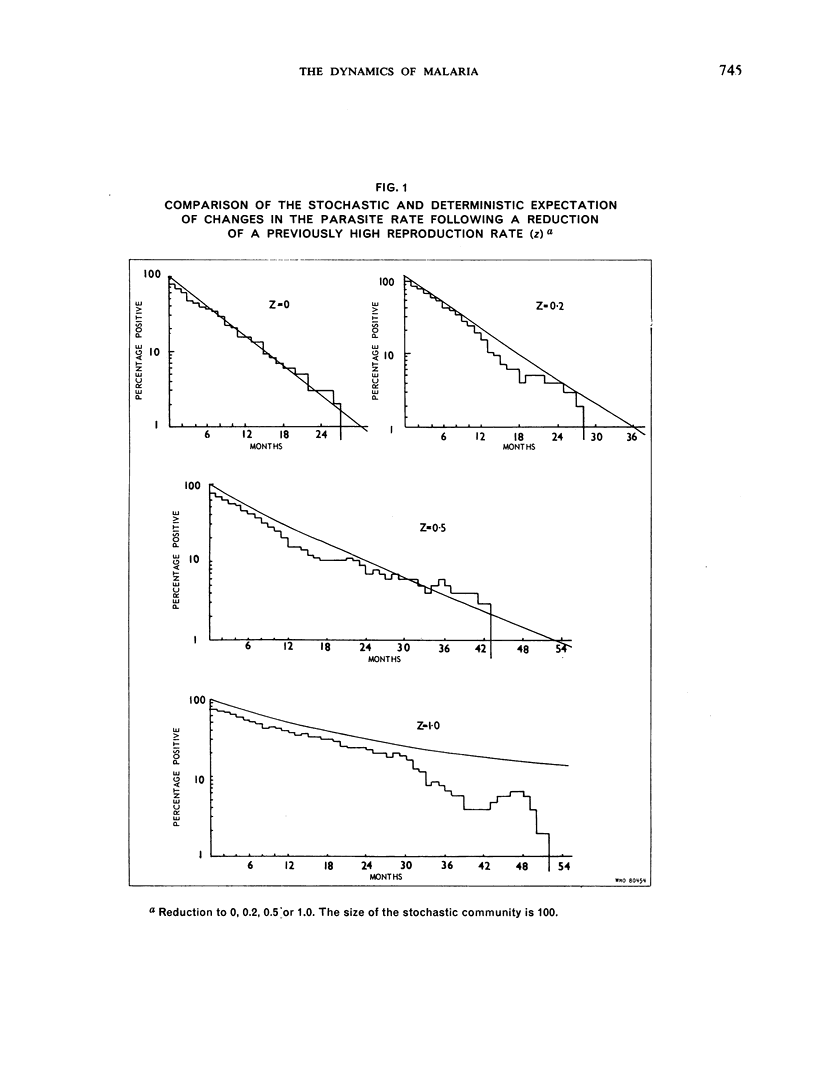
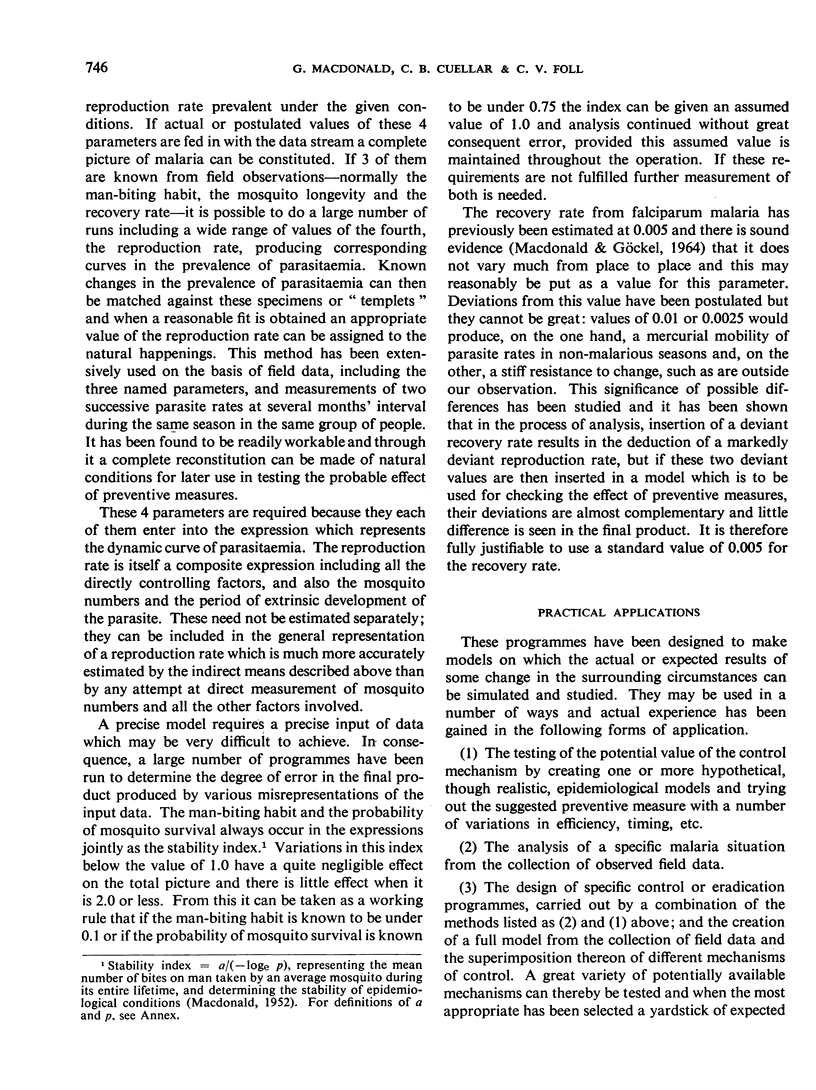
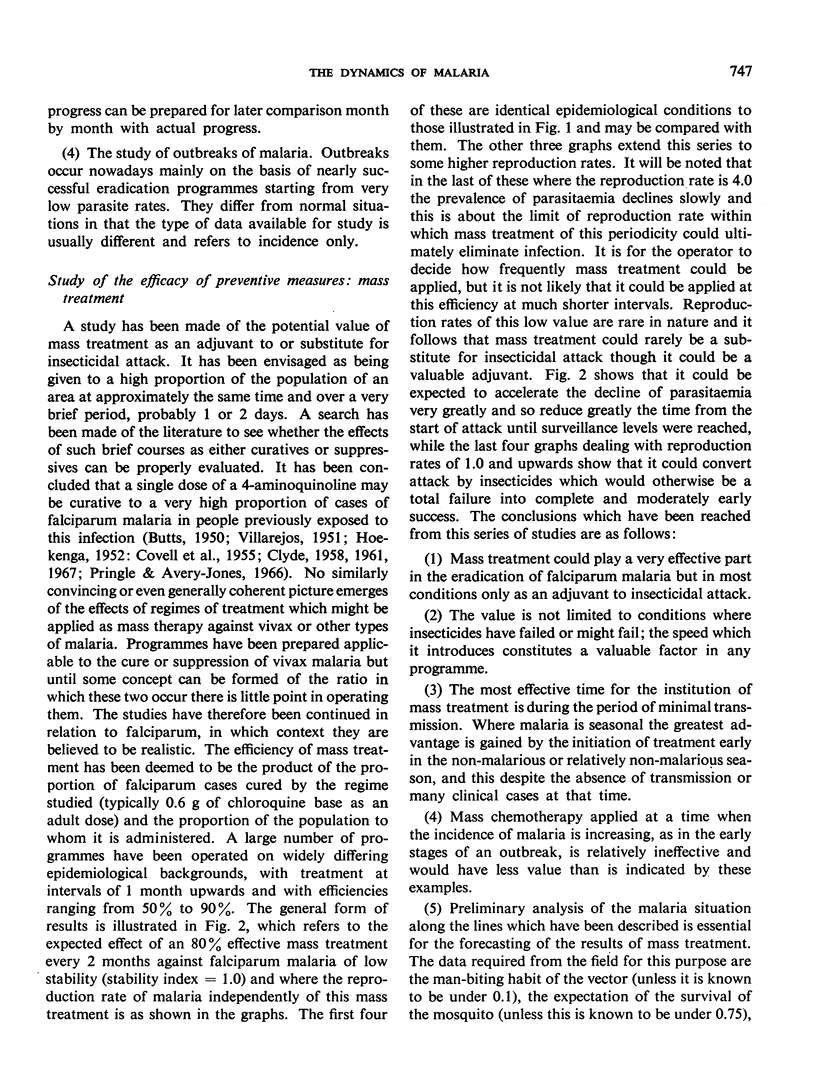

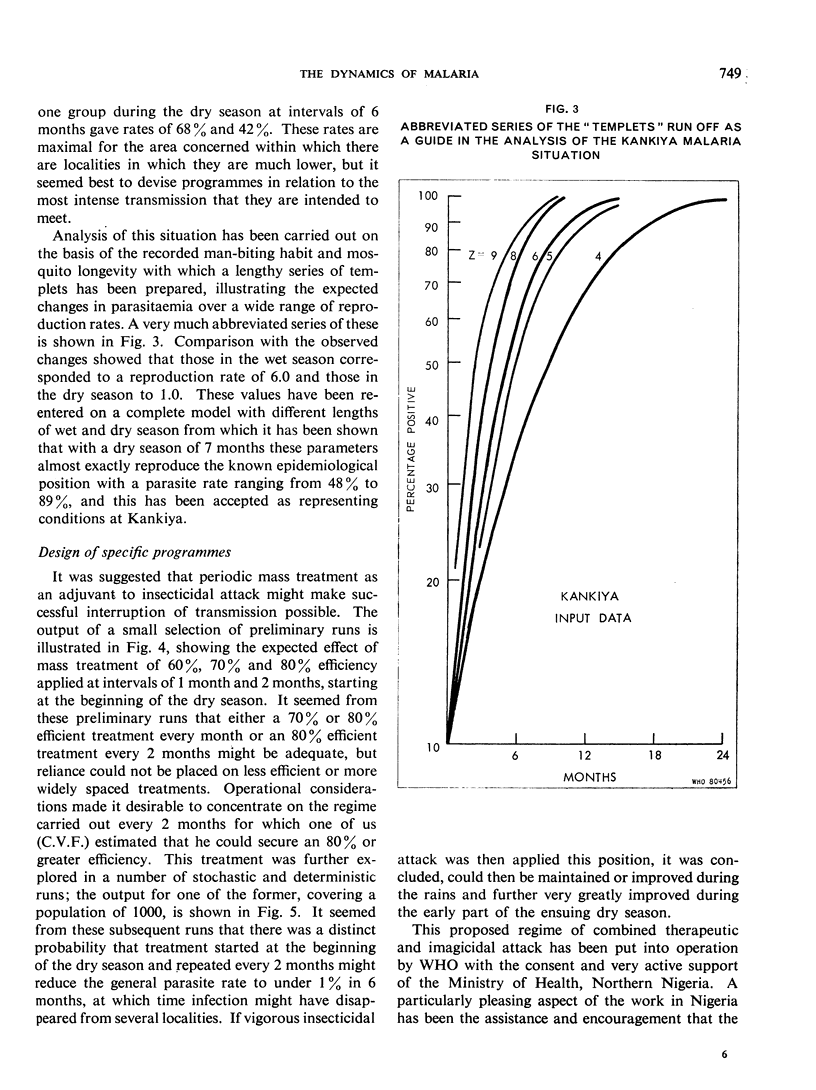
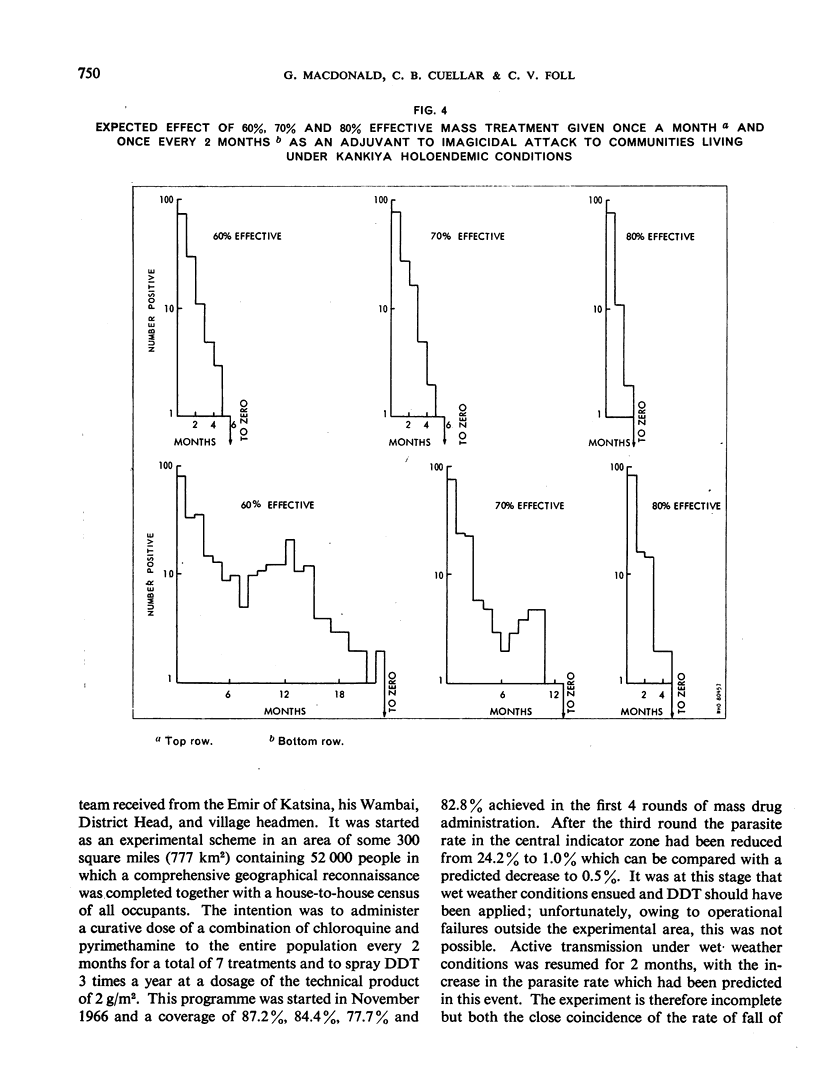
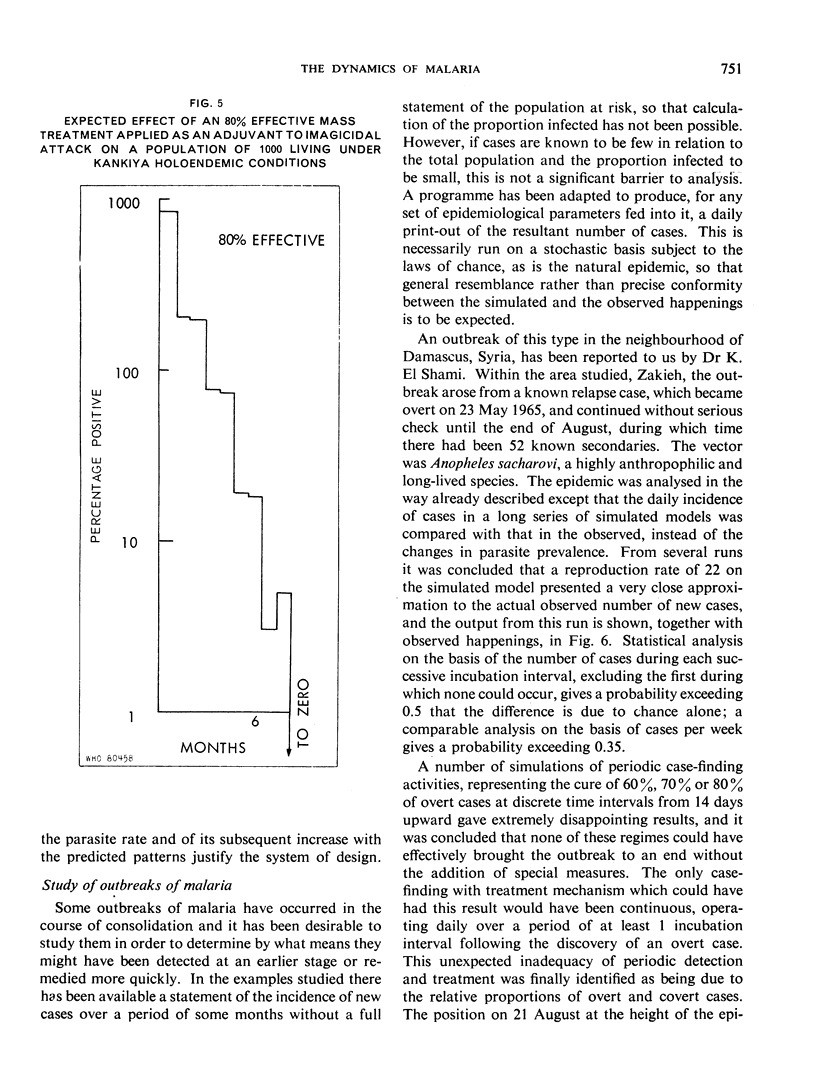
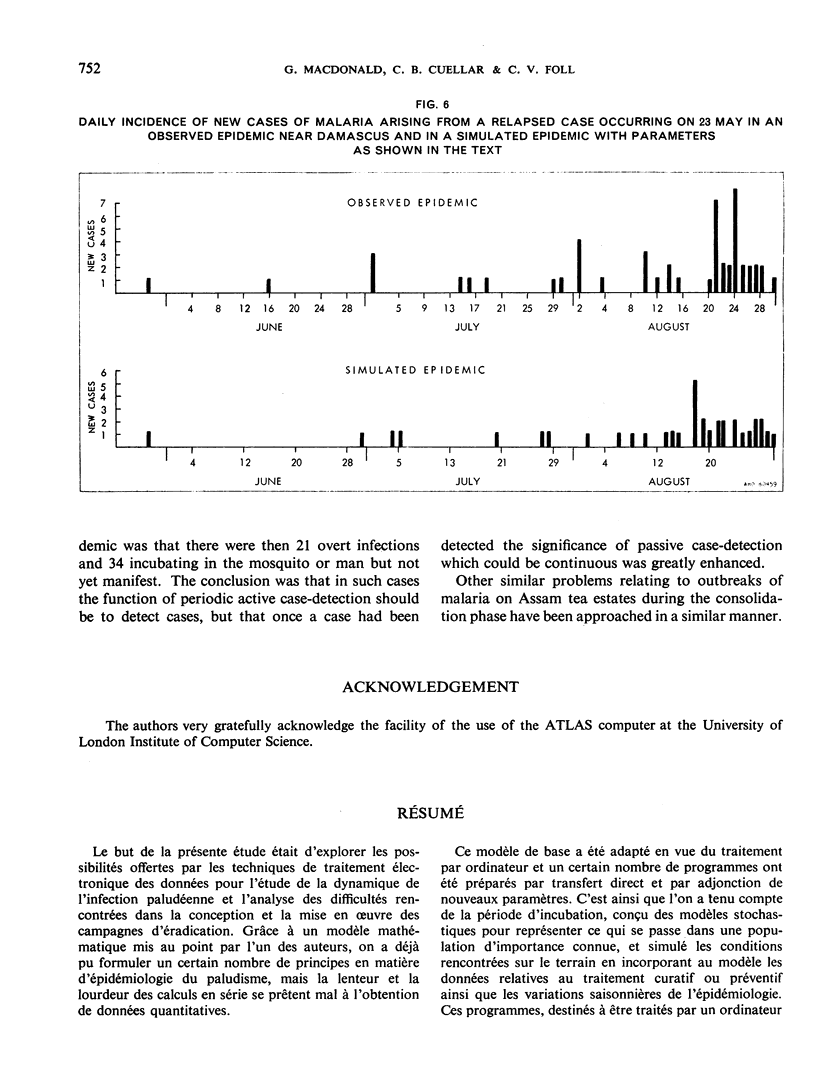
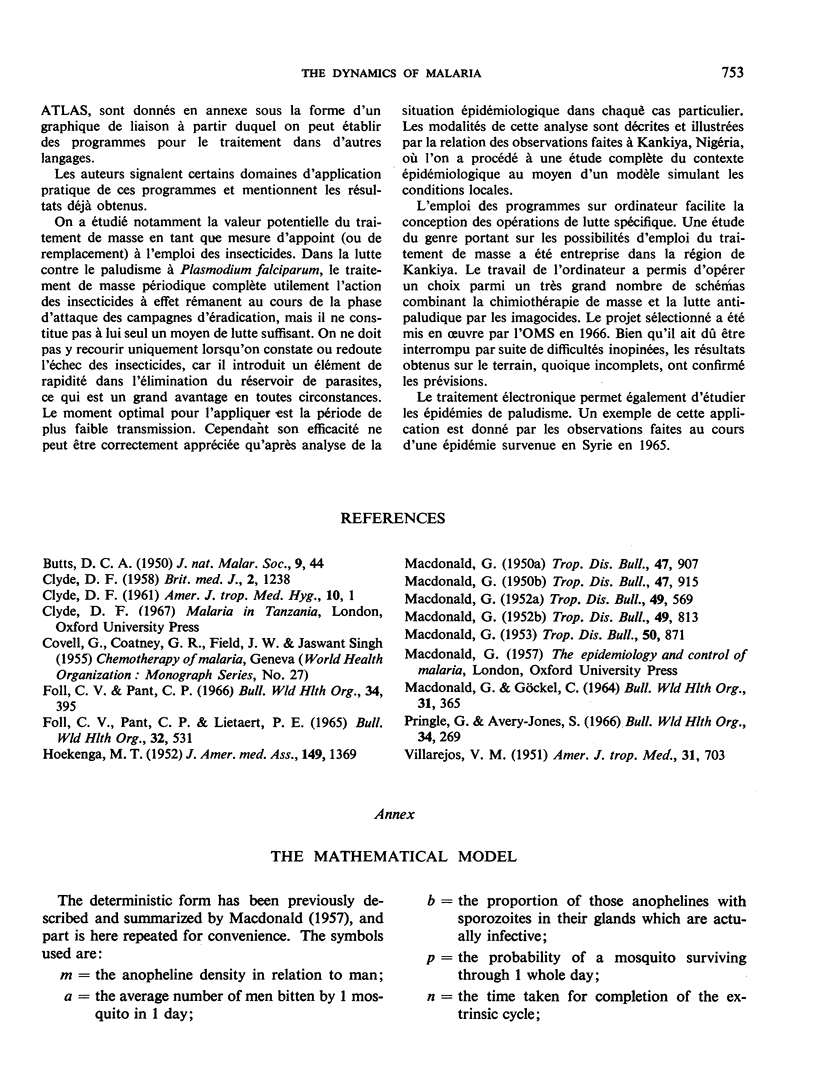
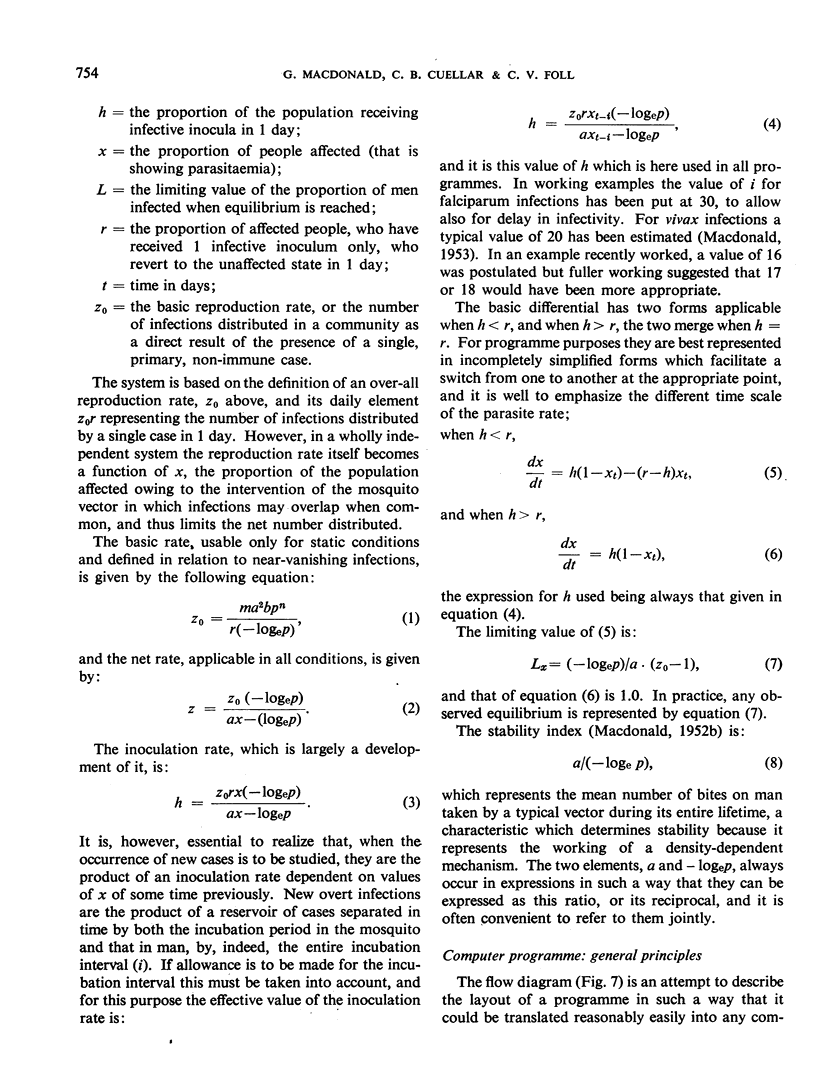
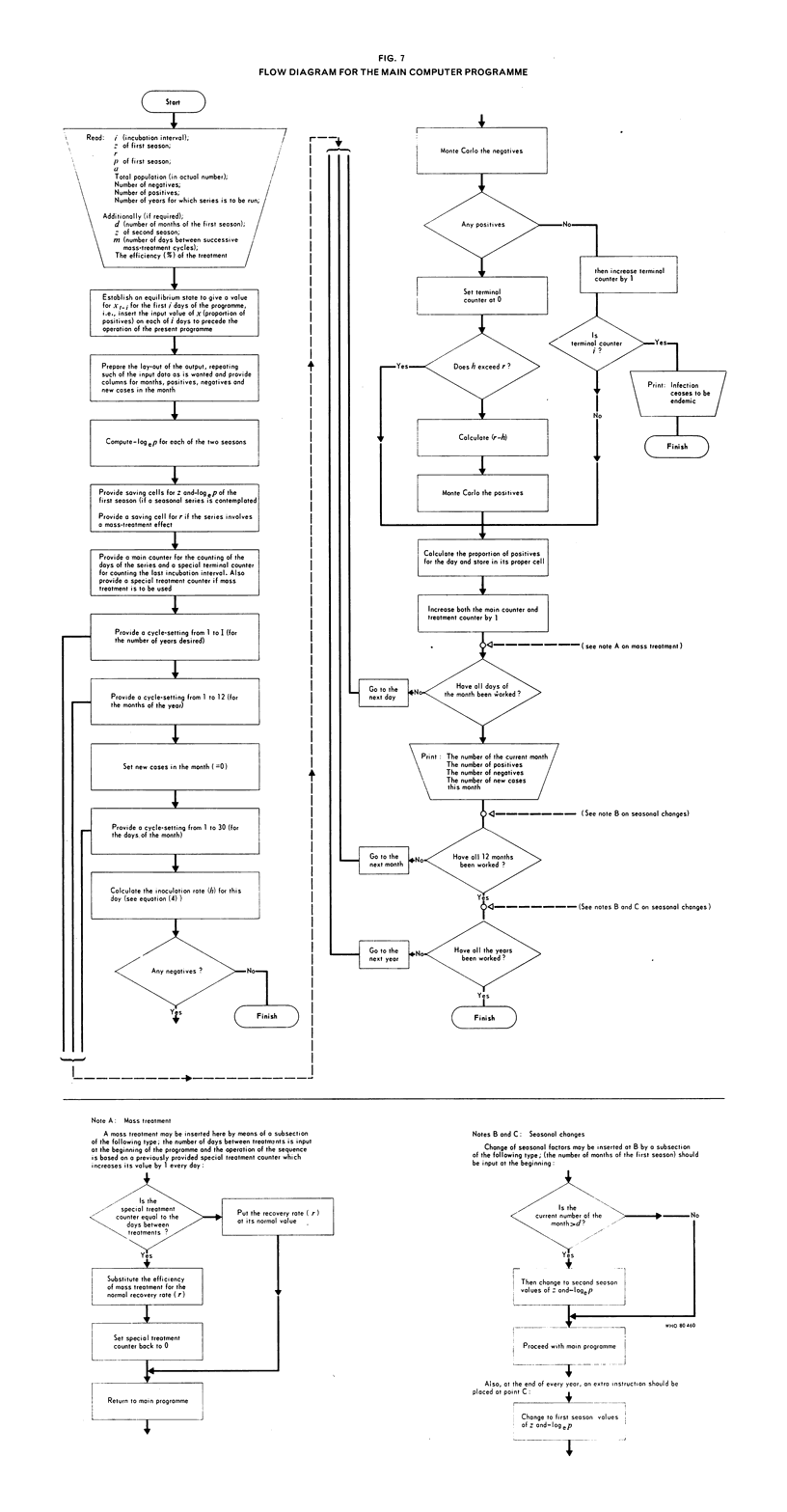
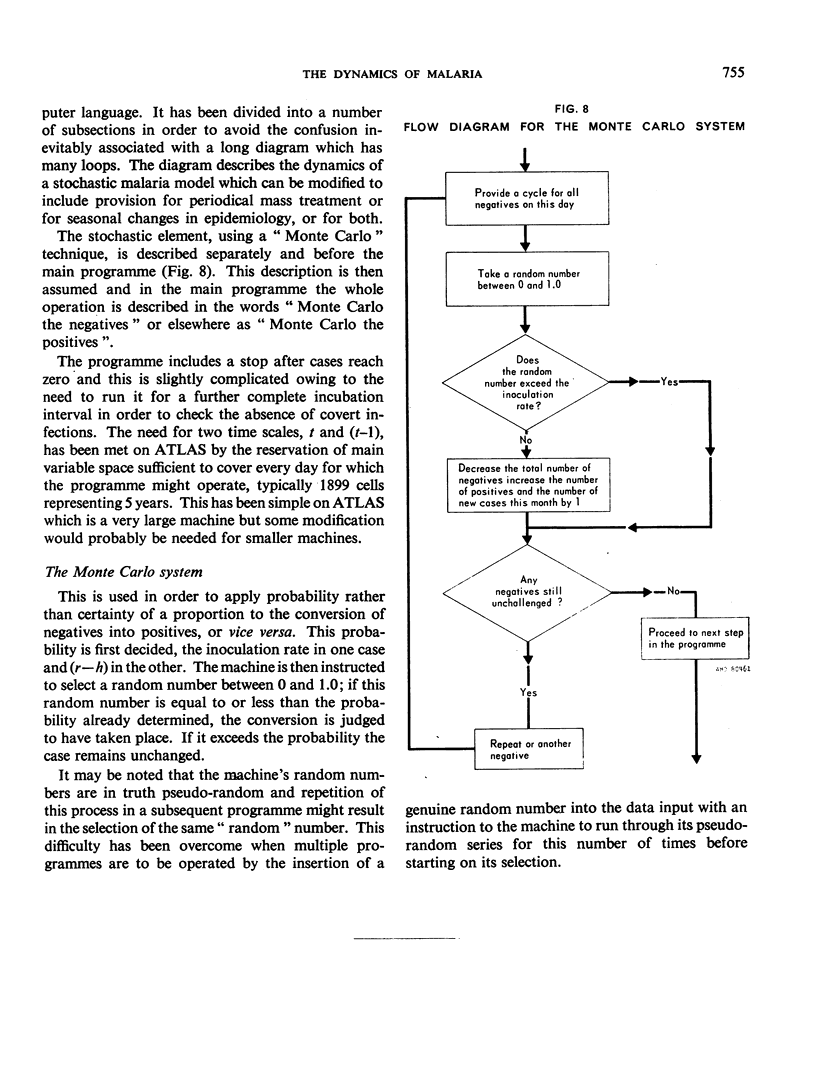
Selected References
These references are in PubMed. This may not be the complete list of references from this article.
- CLYDE D. F. Chloroquine treatment for malaria in semi-immune patients. Am J Trop Med Hyg. 1961 Jan;10:1–4. doi: 10.4269/ajtmh.1961.10.1. [DOI] [PubMed] [Google Scholar]
- FOLL C. V., PANT C. P., LIETAERT P. E. A LARGE-SCALE FIELD TRIAL WITH DICHLORVOS AS A RESIDUAL FUMIGANT INSECTICIDE IN NORTHERN NIGERIA. Bull World Health Organ. 1965;32:531–550. [PMC free article] [PubMed] [Google Scholar]
- HOEKENGA M. T. Treatment of malaria with a single dose of amodiaquine or chloroquine. J Am Med Assoc. 1952 Aug 9;149(15):1369–1371. doi: 10.1001/jama.1952.02930320009003. [DOI] [PubMed] [Google Scholar]
- MACDONALD G. The analysis of equilibrium in malaria. Trop Dis Bull. 1952 Sep;49(9):813–829. [PubMed] [Google Scholar]
- MACDONALD G. The analysis of infection rates in diseases in which superinfection occurs. Trop Dis Bull. 1950 Oct;47(10):907–915. [PubMed] [Google Scholar]
- MACDONALD G. The analysis of malaria epidemics. Trop Dis Bull. 1953 Oct;50(10):871–889. [PubMed] [Google Scholar]
- MACDONALD G. The analysis of the sporozoite rate. Trop Dis Bull. 1952 Jun;49(6):569–586. [PubMed] [Google Scholar]
- Pringle G., Avery-Jones S. Observations on the early course of untreated falciparum malaria in semi-immune African children following a short period of protection. Bull World Health Organ. 1966;34(2):269–272. [PMC free article] [PubMed] [Google Scholar]


